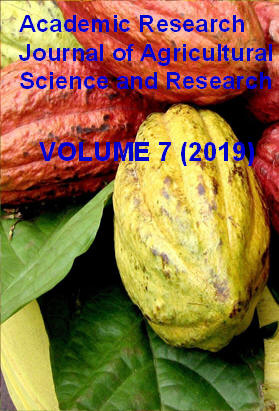|
ISSN: 2360-7874 |
Academic Research Journal of
Agricultural Science and Research |
|||||||||||||||||||
|
Vol. 7(3), pp. 150-159, April 2019 Full Length Research Application of Genetic Fingerprint/Recombinant DNA Technology in Plant Breeding: A review
Dasta Tsagaye Galalcha*
Ethiopian Institute of Agricultural Research, Kulumsa Agricultural Research Center, Asella, Ethiopia
*Corresponding author: Dasta Tsagaye Galalcha, Ethiopian Institute of Agricultural Research, Kulumsa Agricultural Research Center, Asella, Ethiopia; P.O. Box 489; E-mail: 6dasta2@gmail.com
Accepted 22 March 2019
Recombinant DNA technology, genetic engineering, genetic modification/manipulation are similar terms that are applied to the direct manipulation of an organism’s gene. Recombinant DNA is artificially created from two or more DNA incorporated into a single molecule. This review paper was aimed to review the application of Genetic Fingerprint/Recombinant DNA Technology in Plant Breeding.Bases upon restriction enzymes that recognize certain sequences within the DNA, and cut the DNA at the particular site and living organisms, such as bacteria, virus, yeast and mammalian cells to achieve cloning. Recombinant DNA technology can be used for insertion of genes in plants not only from related plant species, but also from unrelated species such as microorganisms. In agriculture primarily for the production of transgenic plants with higher yield and nutritional values, increased resistance to stress and pests. Commercially important transgenic crops such as maize, soybean, tomato, cotton, potato, mustard, rice etc. have been genetically modified. The introduction, integration and expression of foreign genes in plants is to improve the crop with desired trait: resistant to biotic stresses; that means, development of pathogen resistant varieties, resistant to abiotic stresses, improvement of crop yield and quality
Key words: Genetic engineering, Recombinant DNA technology, Plant breeding
How to cite this article (APA Style): Dasta, T.G (2019). Application of Genetic Fingerprint/Recombinant DNA Technology in Plant Breeding: A review. Acad. Res. J. Agri. Sci. Res. 7(3): 150-159
|
|||||||||||||||||||
